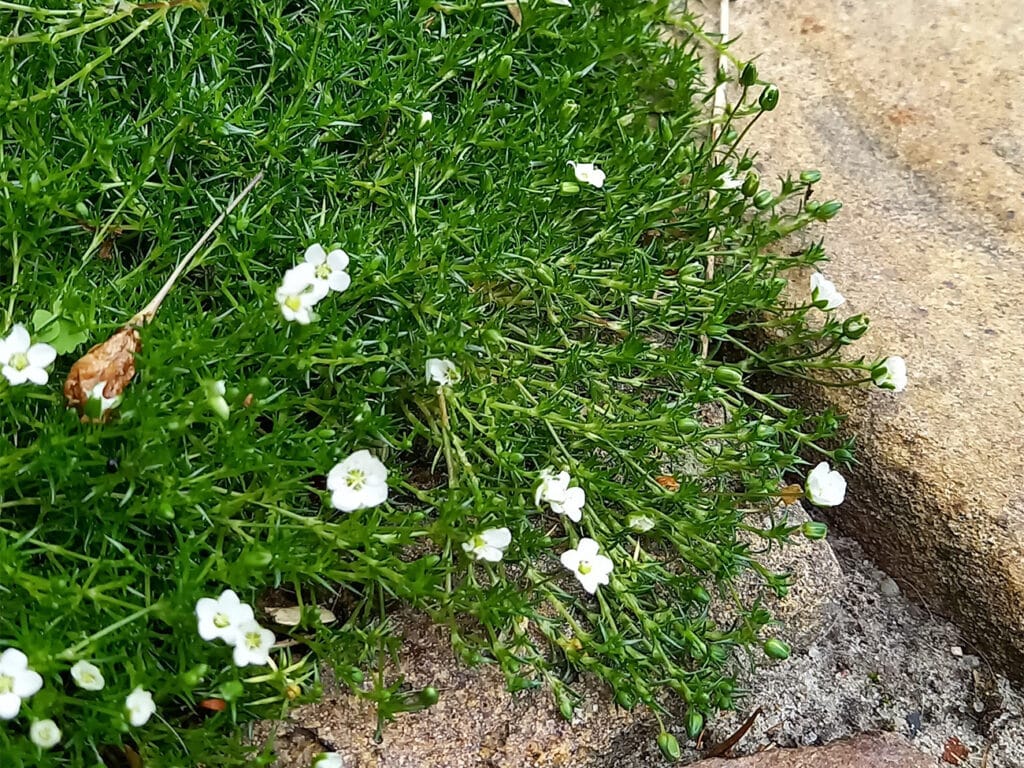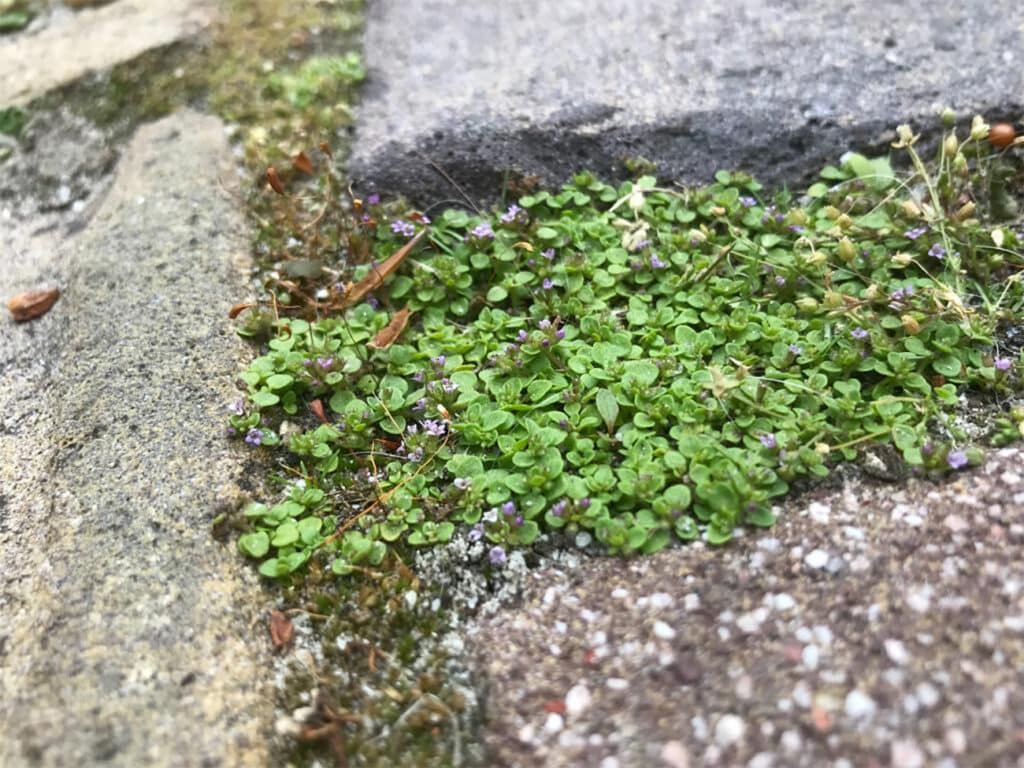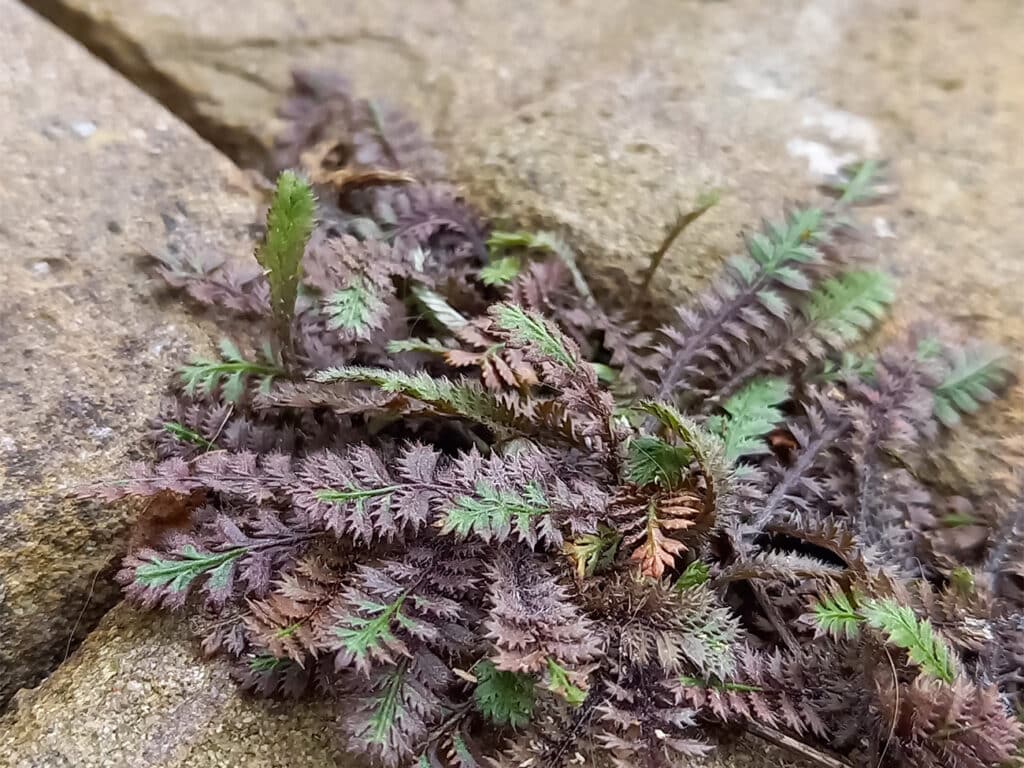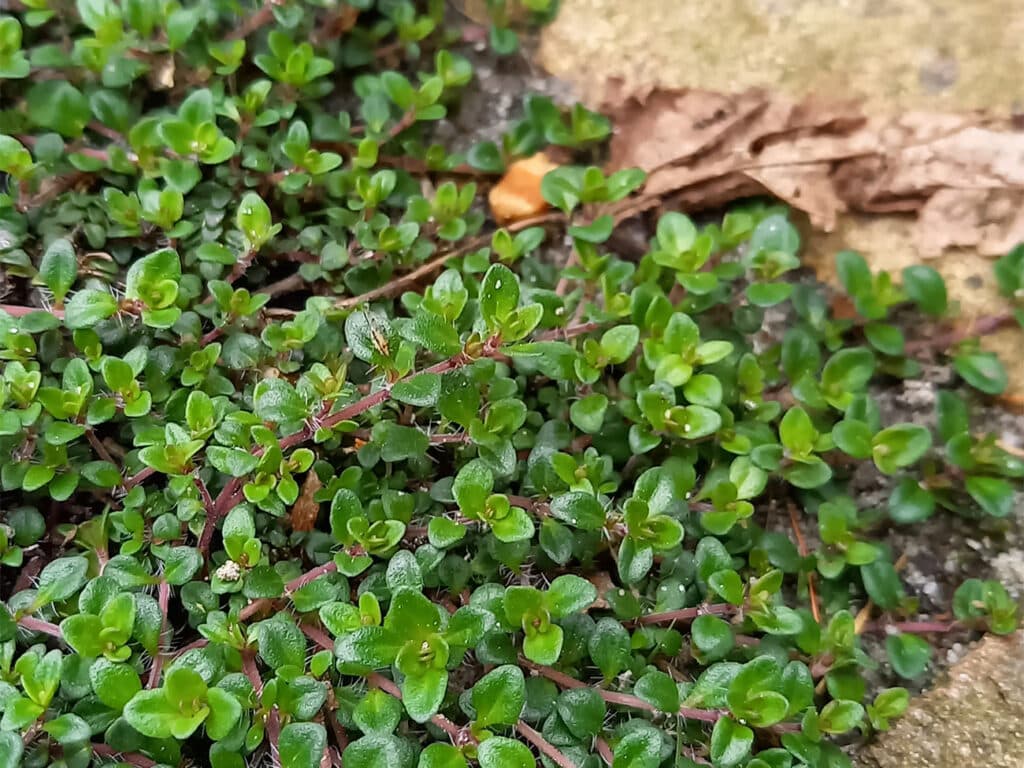
Joints full of greenery
Plants for the tiniest of cracks
Now that the topic of softening has been burning hot for a while, more and more forms of natural paving are being used. The use of pesticides is no longer possible in many places, or is avoided at the request of garden owners. So we are looking for alternatives, because we prefer not to have street grass among the tiling. One such natural form of paving is one that has been around for centuries but has become increasingly popular in recent years. Instead of fighting weeds between joints, we are going to provide them with plants that can tolerate a certain amount of treading.
These succulents are mostly rock plants that can grow in the smallest crack and crevice, require little water and are also satisfied with minimal garden soil. They can do a lot more than you think, in both shade and sun. With the help of Cathy Portier, who has run a nursery of alpine plants for many years, we selected some of the best.

Although people tend to think of sunny dry sites when using rock plants, there are often greater successes with treading plants in shade and semi-shade. This, of course, is because the capacity to store moisture reserves in a joint is very limited. On top of that, we are going to step on it occasionally, so only the very low plants can have this. Nevertheless, we have found a few.
Mentha requinii, for example, a miniature mint plant that gives off a soft scent when you step on it. This Corsican mint is native to the mountains and grows quite quickly. It grows to a maximum height of 2 centimeters and is hardy to -10°C . As an evergreen ground cover, it is interesting all year round, but it has just that little bit more from June to September, when it blooms, with tiny purple flowers.
Thyme species are also a nice fragrant addition to the assortment. Thymus serpylllum or creeping thyme is particularly well suited. Other low-growing species are also possible, such as the slightly more exclusive Thymus 'caborn Wine and Roses'. This was discovered in 2004 by Margaret Easter, who manages the national thyme collection in England. It is a strong-growing, mat-forming cultivar, whose tiny flower spikes turn a puper pink. It is unique, with its beautiful deep color, and blooms beautifully from May to June. On top of that, it is a real bee plant.

Beautiful and yellow
Raoullia australis, also called silver cushion, is a silver moss-like plant. At 1 centimeter tall, it is the perfect joint plant. Originally from New Zealand, however, this plant does not like soil that is too calcareous and should not be too wet in winter. So this does pose a challenge at times. It is hardy to -15°C and blooms in June and July with beautiful but very small yellow flowers.
Sagina subulata or prickly pear is a native plant that likes a low calcium moist spot. A spot in the semi-shade is usually better than in full sun. However, if you want to enjoy its beautiful white flowers, some hours of sun are recommended. Its flowers appear in May through July and rise slightly above the leaves. Sagina sometimes looks a bit like moss, but is a true perennial.

Lawn Replacement
Then again, for shade and semi-shade, there is a tread plant that looks somewhat like a miniature fern: Leptinella squalida or copper button. It grows like a sod and can tolerate quite a bit of treading, so much so that it can be used as a substitute for lawn if the treading is not too extreme. Not a sport or play lawn, in other words. It is green year-round, except in winter, when it turns a bit more to bronze color. There are also cultivars on the market that have dark leaf color year-round. It blooms with small yellow flowers in May-June. Between joints, it is better to put it in shade than in sun; otherwise it dries out too much in summer.



